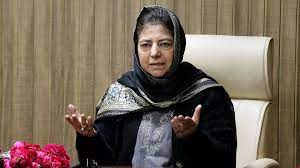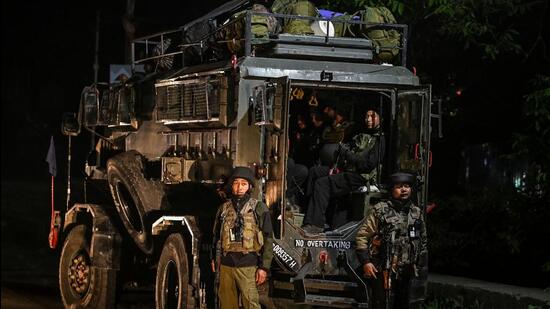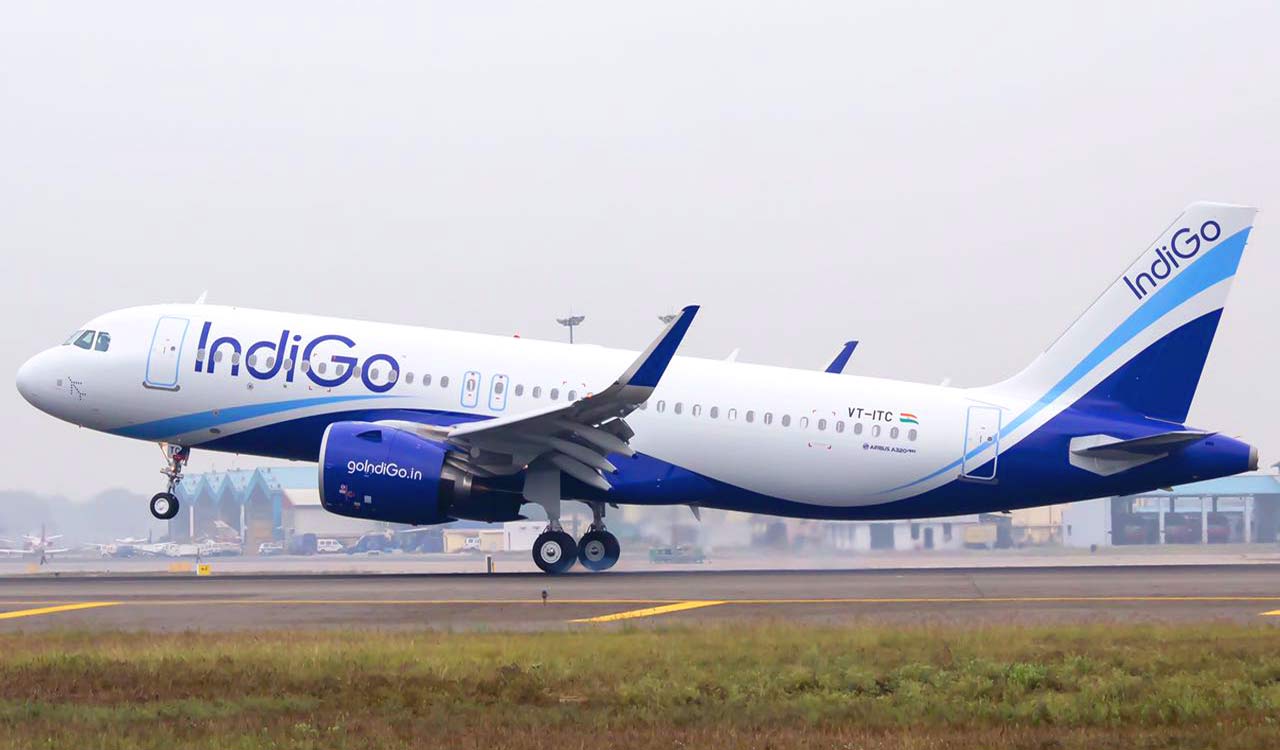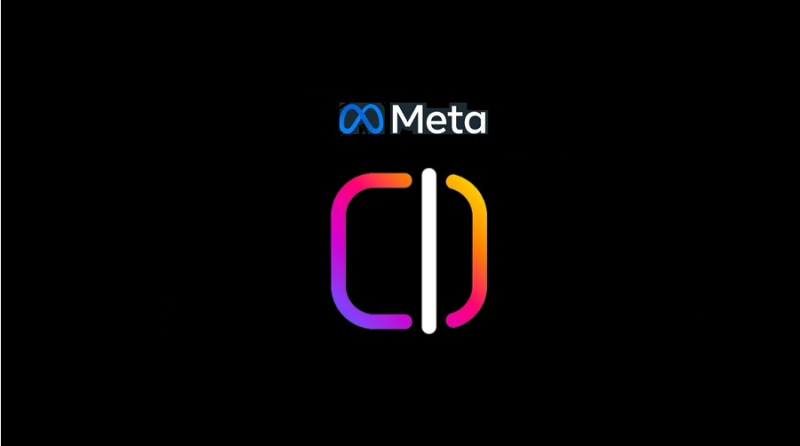News
In a bid to maintain the integrity and values of the Bharatiya Janata Party
During a meeting with the party’s social media teams on Tuesday, Nadda emphasized the importance of upholding the organization’s values and maintaining a dignified approach in political discussions.

During a meeting with the party’s social media teams on Tuesday, Nadda emphasized the importance of upholding the organization’s values and maintaining a dignified approach in political discussions. He urged the teams to prioritize fact-based discussions and avoid indulging in personal attacks or spreading misinformation.
Nadda’s call comes at a time when political discourse in the country has been marred by negative campaigning and mudslinging. With the upcoming state elections, many parties have resorted to malicious campaigns that focus on discrediting their opponents rather than presenting their own agendas.
The BJP president’s stance highlights the party’s commitment to maintaining a high level of political discourse and promoting healthy debates that benefit the nation. He has urged the social media teams to use their platforms to disseminate constructive information that is in line with the party’s values.
In conclusion, Nadda’s message to the BJP’s social media teams serves as a reminder that political discourse should be based on facts, respect, and healthy debates. It is crucial for political parties to maintain a dignified approach to discussions, and the BJP’s commitment to this principle is commendable.
News
India’s New Playbook on Terrorism
The UN Secretary-General has appealed for dialogue, even as India maintains that talks and terror cannot go hand-in-hand. Pakistan,

India Responds to Pahalgam Attack: 5 Tough Moves to Isolate Pakistan
India has launched a no-nonsense diplomatic and strategic offensive against Pakistan in the aftermath of the Pahalgam terror attack, which resulted in 26 deaths, including that of a foreign national. Initial investigations confirmed that the attackers had direct support from terror networks based in Pakistan, leading to urgent action from India’s Cabinet Committee on Security (CCS).
The response is bold, focused, and unprecedented in scope. India has rolled out a 5-point strategy aimed at cutting off Pakistan’s access to Indian goodwill, resources, and diplomatic space.
1. Indus Waters Treaty Suspended: A Historic Move
In a sharp pivot from decades of diplomatic restraint, India has suspended the Indus Waters Treaty, a landmark agreement signed in 1960 that governs the use of rivers shared by the two countries.
This treaty, facilitated by the World Bank, has been upheld even during times of war. By suspending it, India is weaponizing water diplomacy, sending a strong signal that terrorism and cooperation cannot coexist. This decision is expected to spark global debate and could potentially reshape Indo-Pak water politics.
2. Attari-Wagah Border Sealed: Trade and Travel Halted
India has also sealed the Attari-Wagah land route, the most prominent entry and exit point between India and Pakistan.
This includes immediate suspension of goods and civilian movement across the border. Only those who already crossed with valid documents can return by May 1, 2025. The closure affects thousands and is meant to underscore India’s intent to freeze people-to-people contact unless Pakistan cracks down on terrorism.
3. SAARC Visa Exemption Revoked for Pakistanis
In a direct hit to regional diplomacy, India has revoked the SAARC Visa Exemption Scheme (SVES) for Pakistani nationals. This means all existing SVES visa holders from Pakistan must leave India within 48 hours, and no new exemptions will be granted.
This move targets diplomatic, cultural, and business delegates who once enjoyed preferential treatment under the SVES framework. Analysts view this as India’s message to SAARC members that regional unity is impossible without collective action against terror.
4. Military Attachés Expelled: Diplomatic Chill Deepens
India has declared all Pakistani military, naval, and air advisors posted in New Delhi as ‘Persona Non Grata’. These defense personnel have been ordered to leave the country within seven days.
This is not a routine diplomatic shuffle—it’s a strong, calculated signal of India’s disapproval. In a reciprocal move, India is also withdrawing its own military attachés from Islamabad, reflecting a deep freeze in defense diplomacy.
5. Diplomatic Staff Cut in Islamabad: Scaling Down Bilateral Ties
India will reduce the strength of its High Commission in Islamabad from 55 to 30 diplomats by May 1, 2025. This decision marks a significant step toward downsizing formal engagement with Pakistan.
It also limits Pakistan’s ability to engage with Indian diplomats, essentially placing Indo-Pak relations on life support until meaningful change is seen in Pakistan’s counter-terrorism commitments.
Why This Matters: India’s New Playbook on Terrorism
India’s approach this time is deliberate and strategic—not reactionary. Instead of just a military response, New Delhi has taken measures that impact Pakistan’s economy, diplomacy, and access to shared resources. The move reflects a growing belief within Indian policy circles that terrorism must incur diplomatic and economic costs, not just condemnation.
These steps will not only hurt Pakistan’s international image but also strain its regional partnerships. India’s message is loud and clear: cross-border terror will now be met with multi-dimensional retaliation.
Global Community Reacts
The international response has been mixed. While many countries including the US, UK, France, and Japan have backed India’s right to defend itself, others have urged restraint.
The UN Secretary-General has appealed for dialogue, even as India maintains that talks and terror cannot go hand-in-hand. Pakistan, on its part, has denied any involvement in the attack, calling India’s actions “provocative and unwarranted.”
What Lies Ahead?
This 5-point plan is a potential turning point in Indo-Pak relations. While no military action has been announced yet, the scale and severity of India’s diplomatic steps suggest that patience is running thin.
Whether this strategy will lead to a behavioral change in Pakistan remains uncertain. But one thing is certain: India has shifted gears, and the global community is watching closely.
News
New Attack Leaves 26 Dead,
Eyewitness accounts and police reports reveal that the terrorists opened fire on three tourist vehicles traveling along a remote stretch near Aru Valley.

26 Civilians Gunned Down in Cold Blood in Pahalgam
In one of the deadliest terror strikes against civilians in India in over a decade, 26 people, including 25 tourists and one local resident, were killed in Jammu and Kashmir’s scenic town of Pahalgam on Tuesday, April 22, 2025. The attack took place at a popular meadow, turning a serene holiday destination into a bloodbath.
Eyewitness accounts and police reports reveal that the terrorists opened fire on three tourist vehicles traveling along a remote stretch near Aru Valley. While some victims died on the spot, others succumbed to injuries en route to hospitals in Srinagar and Anantnag.
“Deliberate Targeting of Innocents,” Say Officials
Initial investigations indicate that the attack was meticulously planned to target civilians, especially tourists. This calculated brutality has drawn comparisons to the 26/11 Mumbai attacks, both in scale and intent.
“This is not a random act of violence—it is a premeditated strike on India’s unity and peace,” said a senior J&K police official.
Over a dozen injured victims remain hospitalized, many in critical condition. Rescue teams and locals struggled to manage the aftermath, with images of survivors in shock going viral on social media.
PM Modi Returns to Lead Crisis Response
Prime Minister Narendra Modi cut short his diplomatic visit to Saudi Arabia and is expected to return to New Delhi early Wednesday. He had just arrived in Jeddah on a two-day trip meant to boost bilateral ties.
“The entire nation is anguished. This heinous attack will receive a befitting response,” Modi stated before boarding his flight home.
The Cabinet Committee on Security (CCS) has been convened to assess the situation and coordinate a counter-response.
Amit Shah Visits Attack Site, Orders High-Level Probe
Union Home Minister Amit Shah landed in Srinagar early Wednesday and headed directly to the site of the terror attack in Pahalgam. He met with senior officials, visited injured victims, and assured local authorities of full central support.
“We will hunt down the perpetrators and hold those accountable for this security failure,” Shah declared.
A high-level multi-agency investigation has been launched to identify security lapses and intelligence failures.
Suspected Involvement of Pakistan-Backed Groups
Security agencies suspect the role of Pakistan-based terror outfits, particularly The Resistance Front (TRF) and Lashkar-e-Taiba, in orchestrating the attack. While no group has yet claimed responsibility, intercepted communications and prior threats have led investigators in that direction.
The Indian Army and paramilitary forces have launched massive search operations in the surrounding forested areas of Pahalgam.
Tourism Sector Devastated
Pahalgam, often dubbed the “Valley of Shepherds,” is a major hub for tourism in Kashmir. This attack has led to hundreds of cancellations across hotels and tour operators, and local businesses are reeling from shock.
“It was peak season. Now, everything has changed overnight,” said a hotelier from Anantnag.
Several states have issued travel advisories, and security forces are now tasked with ensuring the safe return of all tourists in the Valley.
India Unites in Grief and Defiance
From Kashmir to Kanyakumari, India is in mourning. Vigils were held in several cities, and citizens took to social media to express condolences and demand strong action.
Leaders across political lines have condemned the attack. President Droupadi Murmu expressed “deep sorrow,” and opposition leaders offered bipartisan support to the government in combating terrorism.
A Wake-Up Call for National Security
The Pahalgam massacre serves as a chilling reminder of the fragility of peace in Jammu and Kashmir and the ever-evolving threats India faces. As the government readies a multi-pronged response, the top priority remains ensuring justice for the victims and preventing future atrocities.
This is not just a terror attack—it is a challenge to India’s unity and resilience, and the nation stands firm in its resolve.
News
Kashmir’s New Safety Perception Shaken
A senior ministry official stated, “We’re doing everything possible to support citizens who wish to exit Srinagar. Additional flights are on standby

In a tragic turn of events, a terrorist attack struck the scenic town of Pahalgam in Jammu and Kashmir on Tuesday, April 22, 2025, targeting a group of tourists. The sudden violence triggered fear and panic across the Kashmir Valley, prompting urgent efforts to facilitate the evacuation of visitors from Srinagar, the region’s main transit hub.
In a show of quick coordination, India’s top airlines, including Air India and IndiGo, stepped up with extra flights and full waivers on cancellation and rescheduling fees to ensure safe return for stranded travelers.
Pahalgam Under Attack: Panic Grips Tourists in Kashmir Valley
The serene valley of Pahalgam, usually a symbol of tranquility and nature’s beauty, was jolted by a violent incident when armed militants opened fire on tourists, injuring several. Though local security forces responded swiftly, the psychological damage was done — what was meant to be a peaceful retreat turned into a traumatic experience for dozens of holidaymakers.
The attack has reignited concerns over security in Kashmir, particularly in tourist hubs like Pahalgam and Gulmarg, which had been witnessing a tourism revival in recent months.
Government, Airlines Respond Swiftly with Emergency Measures
Recognizing the urgency of the situation, the Ministry of Civil Aviation promptly directed airline operators to increase flight capacity from Srinagar. As a result, Air India and IndiGo deployed two additional flights each on Wednesday, April 23, to meet the surge in demand from people seeking to leave the valley.
A senior ministry official stated, “We’re doing everything possible to support citizens who wish to exit Srinagar. Additional flights are on standby based on evolving needs.”
Tour operators and hotels have also begun helping guests make rapid exit arrangements, with some even offering transport to the airport.
Full Fee Waiver on Srinagar Flights by Major Indian Carriers
To further support affected passengers, Air India, Air India Express, IndiGo, and Akasa Air announced a week-long waiver of all cancellation and rescheduling charges for flights to and from Srinagar. This measure applies across domestic sectors, allowing travelers to revise their plans without additional stress or financial penalty.
“We understand the fear and urgency among travelers after this shocking event. Our priority is to ensure their safe and hassle-free return,” Air India mentioned in a press note.
Passengers across social media platforms expressed gratitude to the airlines for their compassionate and swift response.
Tourism Sector on Edge as Kashmir’s Safety Perception Shaken
The incident has delivered a blow to Kashmir’s tourism-dependent economy, which had started to see signs of post-pandemic recovery. Tour operators and local businesses are now bracing for large-scale cancellations.
“This is a nightmare for our industry,” said Faisal Ahmed, who runs a guesthouse in Pahalgam. “We had record bookings for April and May. Now tourists are too scared to stay.”
Experts believe that restoring confidence in Kashmir’s safety will be a key challenge for the government. While security has been beefed up and patrols increased in sensitive zones, rebuilding the state’s image as a safe tourist destination will take time.
News
New Potential Challenges and Risks

In a significant legislative development, the Rajya Sabha (RS) on March 26, 2025, passed the Banking Laws (Amendment) Bill 2024, allowing bank account holders to designate up to four nominees. The Lok Sabha had previously cleared the bill in December 2024. The amendment aims to simplify inheritance claims, reduce legal disputes, and offer greater financial flexibility. However, the Opposition raised concerns, arguing that the bill lacked adequate scrutiny and could complicate inheritance proceedings.
Key Provisions of the Banking Laws (Amendment) Bill 2024
The Banking Laws (Amendment) Bill 2024 introduces several critical changes designed to enhance financial security and streamline inheritance processes:
-
Multiple Nominees Rule:
-
Bank account holders can now nominate up to four individuals.
-
The proceeds of the account will be distributed among the nominees as per the specified proportions.
-
-
Legal Rights for Nominees:
-
Nominees will have legal entitlement to claim the funds after the account holder’s death.
-
This provision aims to reduce disputes over rightful inheritance.
-
-
Simplified Nomination Process:
-
Banks are required to establish a clear and accessible process for adding, modifying, or removing nominees.
-
The bill mandates that nominee details must be regularly updated and verified.
-
Opposition’s Criticism and Concerns
While the government promoted the bill as a pro-consumer reform, the Opposition raised objections, arguing that it lacked proper scrutiny.
-
Rushed Passage Without Debate:
-
Opposition leaders criticized the government for fast-tracking the bill without extensive debate.
-
They argued that significant financial legislation required detailed examination and public consultation.
-
-
Inheritance and Legal Complications:
-
Critics warned that the multiple nominees provision could lead to inheritance disputes.
-
They expressed concerns that the bill did not specify how conflicts between legal heirs and nominees would be resolved.
-
-
Demand for Safeguards:
-
The Opposition called for stronger legal safeguards to prevent misuse of the new provision.
-
They demanded detailed regulations to avoid ambiguities and protect legal heirs’ rights.
-
Government’s Defense of the Bill
Defending the bill, Finance Minister Nirmala Sitharaman argued that it is a customer-centric reform aimed at simplifying inheritance processes.
-
She stated that allowing up to four nominees would reduce inheritance disputes by ensuring that account holders can clearly define their inheritance preferences.
-
Sitharaman assured that the government would introduce clear regulations to prevent potential misuse.
-
She emphasized that the bill aligns with international banking practices, which offer multiple nominee options to enhance flexibility and transparency.
Impact on Bank Customers
The passage of the Banking Laws (Amendment) Bill 2024 will have several implications for bank customers:
-
Greater Financial Flexibility:
-
Customers can now distribute their deposits among multiple nominees, ensuring greater flexibility in inheritance planning.
-
This reduces the risk of legal disputes and inheritance conflicts.
-
-
Simplified Claims Process:
-
The bill aims to streamline the process of inheritance claims.
-
Nominees will have legal entitlement to the funds, expediting claim settlements.
-
-
Clarity in Wealth Distribution:
-
With the ability to specify proportions for each nominee, account holders can clearly define their wealth distribution.
-
This reduces ambiguity and ensures equitable distribution.
-
Political Reactions and Industry Response
The passage of the Banking Laws (Amendment) Bill 2024 has sparked mixed reactions from political leaders, financial experts, and industry stakeholders.
-
BJP and NDA allies welcomed the bill, calling it a progressive reform that enhances financial security and streamlines inheritance claims.
-
Opposition parties, including Congress and TMC, criticized the bill’s hasty passage, calling for greater legislative scrutiny.
-
Banking experts appreciated the bill’s intent but stressed the need for detailed regulations to prevent legal complications.
Potential Challenges and Risks
While the bill aims to simplify inheritance processes, it also presents certain challenges:
-
Inheritance Disputes:
-
Allowing multiple nominees could lead to inheritance conflicts with legal heirs.
-
The bill does not clearly define how disputes between nominees and legal heirs will be resolved.
-
-
Banking System Adjustments:
-
Banks will need to update their systems to accommodate multiple nominees.
-
Ensuring proper verification of nominee details could increase operational challenges.
-
-
Need for Transparent Guidelines:
-
The government must introduce detailed operational guidelines to prevent misuse.
-
Regular audits and oversight will be necessary to ensure transparent implementation.
-
The Banking Laws (Amendment) Bill 2024 is a significant legislative reform aimed at simplifying inheritance claims and enhancing financial security. By allowing up to four nominees, the bill offers greater flexibility for account holders. However, concerns raised by the Opposition regarding inheritance disputes and lack of scrutiny highlight the need for clear regulatory guidelines. Moving forward, the government must ensure transparent implementation and address potential legal ambiguities to safeguard customers’ interests.
FAQs: Banking Laws (Amendment) Bill 2024
1. What is the key change introduced by the Banking Laws (Amendment) Bill 2024?
The bill allows bank account holders to nominate up to four individuals, streamlining the inheritance process.
2. Why did the Opposition criticize the bill?
The Opposition argued that the bill was passed without sufficient scrutiny and could lead to inheritance disputes.
3. How will the bill benefit bank customers?
It offers greater flexibility in inheritance planning by allowing multiple nominees and simplifying the claims process.
4. When was the bill passed?
The Lok Sabha approved the bill in December 2024, and the Rajya Sabha cleared it on March 26, 2025.
News
A New Era of Indian Representation
In a historic move, Maruti Suzuki India Limited has appointed Sunil Kakkar as an Additional and Whole-time Director, effective from April 1, 2025,

In a historic move, Maruti Suzuki India Limited has appointed Sunil Kakkar as an Additional and Whole-time Director, effective from April 1, 2025, for a period of three years. This marks the first time an in-house Indian executive has been elevated to the board by Suzuki Motor Corporation (SMC), the Japanese parent company.
The appointment was approved during the board meeting on March 26, 2025, signaling SMC’s growing trust in Indian leadership. With this, Maruti Suzuki’s board now has six Japanese and six Indian directors, reflecting a more balanced governance structure.
Who is Sunil Kakkar?
Sunil Kakkar is a long-standing Maruti Suzuki executive with decades of experience in the company. He has been a key contributor to the company’s operational success and strategic growth.
Kakkar is known for his deep expertise in business operations, corporate governance, and market strategies. His appointment is seen as a recognition of his leadership skills and a testament to Maruti Suzuki’s growing focus on promoting Indian talent.
Significance of Kakkar’s Appointment
Sunil Kakkar’s elevation to the board carries significant implications for Maruti Suzuki and the broader corporate sector:
-
First-ever in-house Indian director:
This appointment breaks new ground for Maruti Suzuki, as no previous Indian executive from within the company had been appointed to the board. -
Balanced representation:
With an equal 6-6 representation of Indian and Japanese directors, the board now reflects a more collaborative and diverse leadership, improving decision-making efficiency. -
Recognition of local talent:
Kakkar’s appointment highlights SMC’s growing confidence in Indian leadership, signaling a shift toward greater local representation in decision-making roles.
Impact on Maruti Suzuki’s Leadership
Sunil Kakkar’s inclusion on the board is expected to drive positive changes in Maruti Suzuki’s leadership approach:
-
Localized decision-making:
Kakkar’s deep understanding of the Indian market and consumer behavior will help Maruti Suzuki make more region-specific and consumer-centric decisions. -
Stronger representation:
With an in-house Indian executive on the board, local perspectives will have a stronger voice, enabling the company to be more responsive to domestic challenges and opportunities. -
Leadership diversity:
A balanced board with equal Indian and Japanese representation fosters diversity, leading to more inclusive and effective governance. -
Industry Implications: A Shift Toward Local Talent
Maruti Suzuki’s decision to appoint Sunil Kakkar to the board also signals a wider trend in the Indian auto sector:
-
Increased localization:
The move highlights SMC’s trust in Indian expertise, which could encourage other multinational companies to promote local talent to leadership roles. -
Enhanced employee morale:
Kakkar’s elevation sends a positive message to Maruti Suzuki employees, boosting morale and demonstrating that in-house talent has a clear growth path to the top. -
Impact on industry norms:
This appointment could set a precedent for other multinational corporations in India, prompting them to include more local executives in their top leadership teams.
A New Era of Indian Representation
Sunil Kakkar’s appointment as Maruti Suzuki’s first in-house Indian director marks a significant milestone in the company’s history. It reflects Suzuki Motor Corporation’s growing confidence in Indian leadership and signals a new era of local representation in multinational firms.
As Maruti Suzuki continues to dominate the Indian auto market, Kakkar’s presence on the board is expected to enhance strategic decision-making, boost local expertise, and inspire Indian professionals to aim for top leadership positions. This move also strengthens the company’s governance and positions it for more dynamic growth in the future.
News
New Impact of Toll Revenue on Infrastructure

India’s rapidly expanding highway network is witnessing a significant boost in toll collections, contributing substantially to infrastructure funding. According to the Ministry of Road Transport and Highways (MoRTH), the top 10 toll plazas in India collected Rs 14,000 crore in revenue between 2019-20 and 2023-24.
Leading the list is the Bharthana toll plaza on NH-48 in Gujarat, which generated Rs 2,043.81 crore during the period. This surge highlights the growing vehicular traffic and the importance of toll revenues in financing India’s infrastructure projects.
Top 10 Toll Plazas by Revenue in India
Here are the top 10 toll plazas in India based on their revenue collections over the last five years:
1. Bharthana Toll Plaza, Gujarat
-
Location: NH-48 (Vadodara-Bharuch stretch)
-
Total Collection: Rs 2,043.81 crore
-
Highest Annual Collection: Rs 472.65 crore (2023-24)
Bharthana leads the list with its high revenue, driven by heavy commercial traffic and passenger vehicle movement on this busy stretch.
2. Chittorgarh Toll Plaza, Rajasthan
-
Location: NH-48 (Chittorgarh bypass)
-
Total Collection: Rs 1,745.32 crore
Situated on the Delhi-Mumbai Expressway, this plaza handles substantial freight traffic, boosting its collections.
3. Shamlaji Toll Plaza, Gujarat
-
Location: NH-48 (Gujarat-Rajasthan border)
-
Total Collection: Rs 1,680.24 crore
Strategically located, this toll plaza generates high revenue from commercial vehicles traveling between Gujarat and Rajasthan.
4. Manesar Toll Plaza, Haryana
-
Location: NH-48 (Gurugram-Manesar stretch)
-
Total Collection: Rs 1,590.47 crore
This toll plaza, situated on the heavily trafficked Delhi-Jaipur corridor, earns substantial revenue from both freight and passenger vehicles.
5. Kishangarh Toll Plaza, Rajasthan
-
Location: NH-48 (Kishangarh-Ajmer stretch)
-
Total Collection: Rs 1,520.39 crore
A key point on the Delhi-Mumbai route, this plaza collects significant tolls from commercial and long-distance vehicles.
6. Dankuni Toll Plaza, West Bengal
-
Location: NH-2 (Dankuni-Palsit stretch)
-
Total Collection: Rs 1,460.85 crore
Positioned along the Kolkata-Delhi highway, this plaza benefits from the high volume of freight and passenger traffic.
7. Nallur Toll Plaza, Tamil Nadu
-
Location: NH-544 (Coimbatore bypass)
-
Total Collection: Rs 1,370.15 crore
Situated on the bustling Tamil Nadu-Kerala route, this plaza generates significant revenue from interstate vehicle movement.
8. Durgapur Toll Plaza, West Bengal
-
Location: NH-19 (Durgapur)
-
Total Collection: Rs 1,295.63 crore
As part of the Golden Quadrilateral project, this toll plaza witnesses heavy traffic flow, driving its revenue growth.
9. Dumri Toll Plaza, Bihar
-
Location: NH-19 (Dumri stretch)
-
Total Collection: Rs 1,180.92 crore
This plaza, on a major trade route, generates high toll income from continuous freight movement.
10. Mahuvan Toll Plaza, Uttar Pradesh
-
Location: NH-19 (Agra-Kanpur stretch)
-
Total Collection: Rs 1,145.72 crore
Located on a busy stretch, this plaza earns significant revenue from both cargo vehicles and private cars.
Key Factors Driving the Surge in Toll Revenue
Several factors have contributed to the sharp increase in toll collections:
Increase in vehicle traffic: With rising commercial and passenger vehicle ownership, toll collections have surged.
Highway expansion: New highways and expressways, including the Delhi-Mumbai Expressway, have increased the number of toll plazas.
FASTag implementation: The adoption of FASTag has streamlined toll payments, reduced revenue leakages, and boosted collection efficiency.
Freight growth: Increased transportation of goods through trucks and trailers has significantly raised toll earnings.
How Toll Revenue Supports Infrastructure Development
The Rs 14,000 crore collected by the top 10 toll plazas plays a crucial role in funding infrastructure projects:
-
Highway maintenance and upgrades: The revenue is used to repair, resurface, and enhance existing highways.
-
Expansion projects: Funds support new highway construction and road widening projects.
-
Debt servicing: The government uses toll revenue to pay off debts from Public-Private Partnership (PPP) infrastructure projects.
-
Technology integration: Toll revenue funds automated toll collection systems and other technological upgrades for smoother operations.
Challenges in Toll Collection
Despite the surge in toll revenue, the system faces some challenges:
-
Traffic congestion: Toll plazas, especially during peak hours, face heavy congestion despite FASTag integration.
-
Evasion and fraud: Some drivers evade toll payments through loopholes or by taking alternative routes.
-
Technical glitches: Malfunctions in FASTag systems occasionally disrupt toll collections.
-
Public protests: Toll hikes often face resistance from local commuters and transport associations.
The Future of Toll Collection in India
The government is focusing on making toll collection more efficient and seamless through several initiatives:
-
GPS-based tolling: The National Highways Authority of India (NHAI) plans to introduce GPS-based tolling, eliminating the need for physical plazas.
-
Automated tolling corridors: Highways are being equipped with free-flow tolling systems to reduce congestion.
-
Enhanced FASTag usage: Expanding FASTag coverage will further streamline toll operations.
Toll Revenue Boosting Infrastructure Growth
The Rs 14,000 crore collected by India’s top 10 toll plazas over five years highlights the growing reliance on user fees for infrastructure development. With the expansion of highway networks, increasing vehicle traffic, and the adoption of advanced toll collection technologies, toll revenues are expected to rise further.





